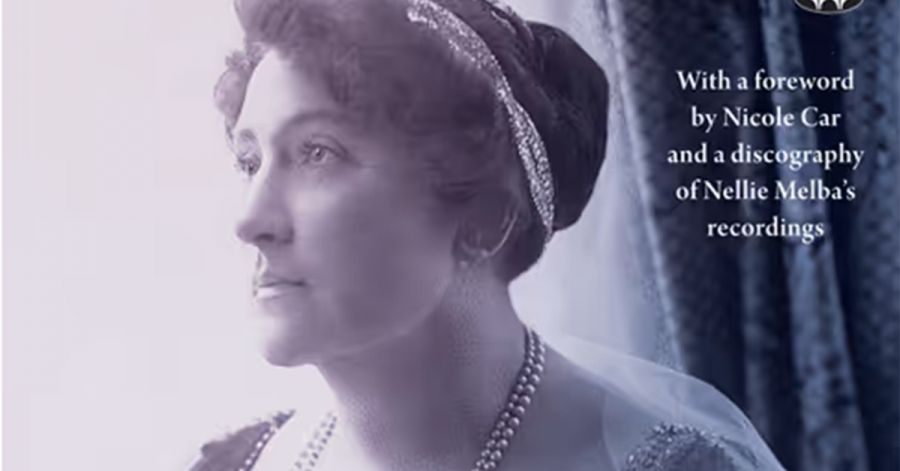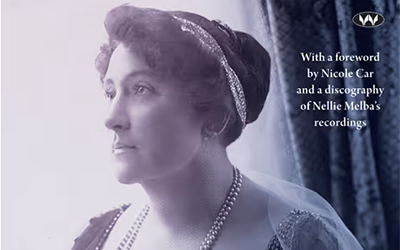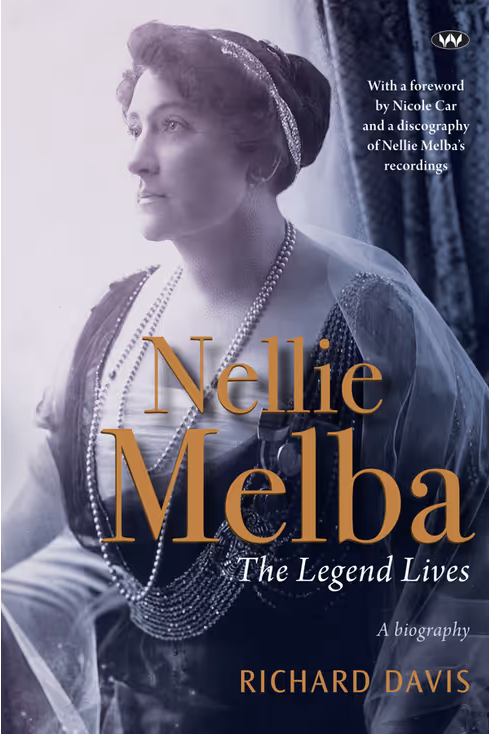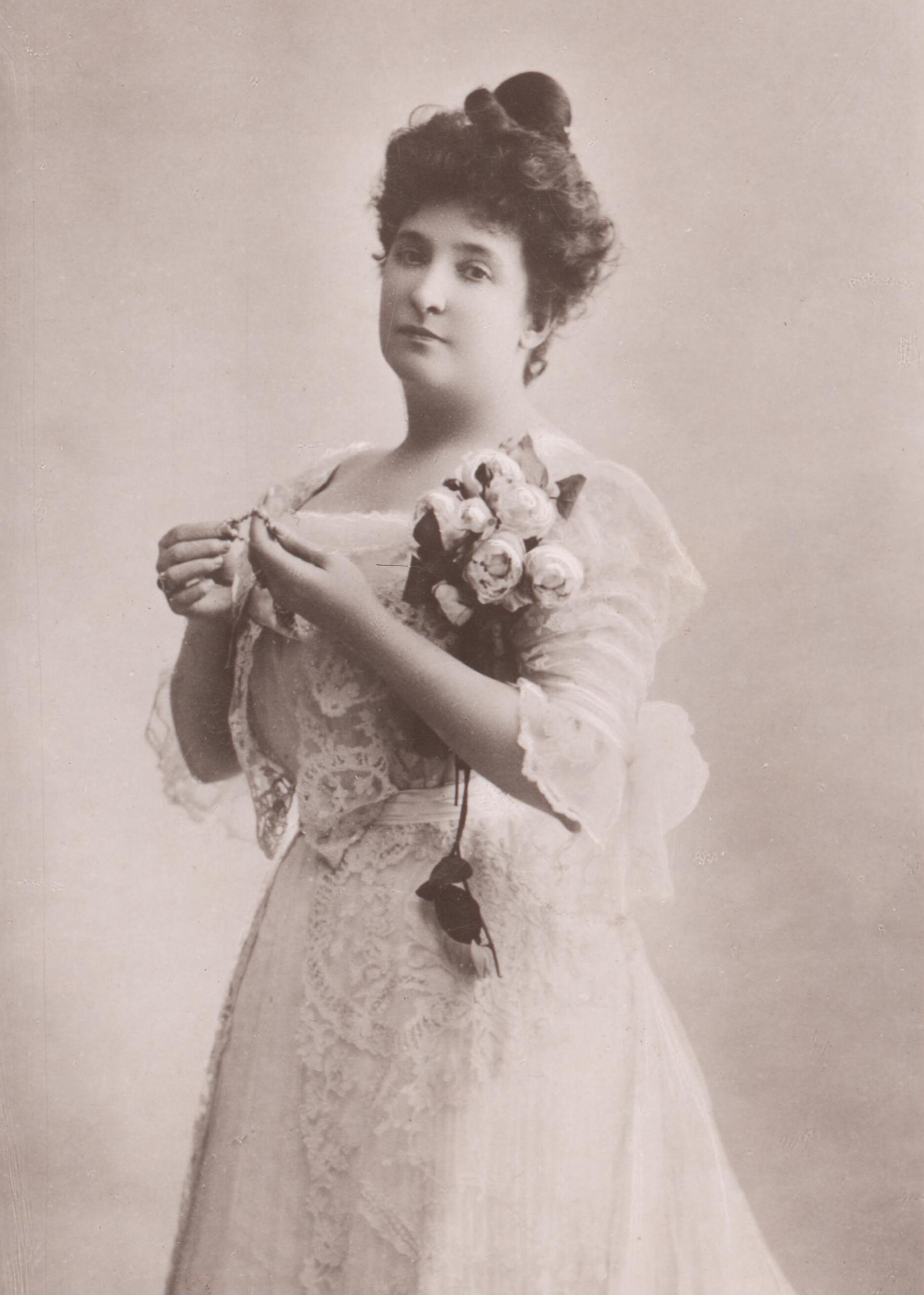
- Free Article: No
- Contents Category: Biography
- Review Article: Yes
- Article Title: The empress of pickpockets
- Article Subtitle: A worthy addition to the diva's literature
- Online Only: Yes
- Custom Highlight Text:
Product placement, admittedly not a term in vogue in Madame Melba’s time (1861-1931), was lucratively and occasionally indiscriminately deployed in her name. Since that name was itself an invention (one decided upon in late 1886, by Mrs Armstrong, née Mitchell, at the behest of her teacher, Madame Marchesi), it was officially or blatantly unofficially applied to everything from throat lozenges and mouthwash to cigarettes, motorcycles, and a sewing machine. Then, of course, there are Escoffier’s tasty tributes: Pêches Melba and Melba Toast – and let’s not forget that small town in Idaho, Melba (pop. 600). This was named not directly after Nellie, but a Melba once removed: the daughter of the man who founded the town in 1912. At the time, Melba was as fashionable a name for newborn girls in the United States as it was in Britain.
- Featured Image (400px * 250px):

- Alt Tag (Featured Image): Michael Shmith reviews ‘Nellie Melba: The legend lives – a biography’ by Richard Davis
- Book 1 Title: Nellie Melba
- Book 1 Subtitle: The legend lives – a biography
- Book 1 Biblio: Wakefield Press, $49.95 pb, 641 pp
- Book 1 Cover Small (400 x 600):

- Book 1 Cover (800 x 1200):

- Book 1 Readings Link: https://www.readings.com.au/product/9781923042131/nellie-melba--richard-davis--2024--9781923042131#rac:jokjjzr6ly9m
Nellie Melba’s fortune, fame, notoriety, and character were so synonymous that now, nearly a century after her death, her reputation for turning a profit and for unalloyed grandeur has tended to eclipse her artistry, although, at the twitch of a switch, one can be reminded of that incomparable voice via the trove of more than two-hundred pioneering commercial and live recordings Melba made between 1904 and 1926 (a discography is included). But what was she like as an artist? As with any performer, legendary or otherwise, greatness is subject to change. What were Melba’s cons as well as her pros? You would have to have been there – like the anonymous critic for The Times, who, reviewing her Mimì, in La bohème, at Covent Garden in 1924, had this to say:
In a moment there was Melba again on the stage, letting us enjoy that peculiar timbre which is most appealing when she makes least effort about it, making us realize how much better Puccini’s phrases sound in Italian than translated into English, moving her hands with those quaint little gestures which often take the place of acting.
Counterpoint this with the rhapsodic account, quoted in the book, by the Scottish soprano Mary Garden, who saw Melba sing Mimì in the same house fifteen years earlier:
The way that Melba sang that high C was the strangest and weirdest thing I have ever experienced in my life. The note came floating out over the auditorium … it left Melba’s throat, it left Melba’s body, it left everything and came over like a star and passed us in our box, and went out into the infinite.
There is therefore strong reason to welcome Richard Davis’s thoroughly researched and highly readable biography – by his count, the fifteenth book about Melba’s life. The first two, written while the diva was still very much alive and very much able to relate her own story as she saw fit, appeared in 1909 and 1925; among later biographies have been fine ones by John Hetherington (1967), Thérèse Radic (1986), Pamela Vestey, Melba’s granddaughter (2000), and, hitherto the most notable, Ann Blainey (see my review, ABR, May 2008).
Davis’s biography, however, belongs in a class of its own, for several reasons. The first is his assiduous sorting-out of straight fact from exaggeration or plain fiction. For example, did Melba ever say, when her English contemporary Clara Butt asked what she should sing to Australian audiences, ‘Oh, sing them muck. That’s all they understand’? It seems highly unlikely. Melba, however, was rumoured to have said, sometime later, ‘I didn’t need to tell Clara to sing muck … that was all she ever sang.’
 Nellie Melba, c. 1907 (National Library of Australia via Wikimedia Commons)
Nellie Melba, c. 1907 (National Library of Australia via Wikimedia Commons)
Another special aspect of Davis’s narrative is how, even when the story threatens to become bogged down with too many names, dates, places, tours, arias, and reviews, he never loses sight of Melba’s true centre of gravity: her artistry. It is that serendipitous combination of technical skills, scholarship, and musicianship that made her the extraordinary and celebrated singer she was. This, perhaps, also had much to do with the times in which Melba performed. Her lengthy career, from 1887 to 1930, spanned the Victorian, Edwardian, and Georgian ages. Indeed, she knew all three monarchs, and their families, who often commanded her to sing for them, as they, in turn, went to hear her sing at Covent Garden, where she herself reigned supreme for thirty-eight years. At her farewell there, in 1926, she thanked just one person: Austin, the stage doorman.
It is tempting to consign Melba to the past, as something as fusty as some of her elaborate costumes. But she was, for the most part, an operatic modernist. As Davis writes: ‘Of the composers of the twenty-six operas in which Melba did perform, only one (Donizetti) had died before she was born; and all but ten of the twenty-six operas were composed during Melba’s lifetime.’ Davis adds that Melba studied fourteen of her roles with their composers, including Verdi, Puccini, Mascagni, Leoncavallo, Massenet, and Saint-Saëns. She never met Wagner, more’s the pity, but she did encounter Mahler, then director of the Imperial Opera, Vienna, who begrudgingly presented her with a post-performance laurel wreath and later said of her voice, ‘one might as well listen to a clarinet’.
Another thing Davis stresses is Melba’s national DNA. As she put it, ‘You must understand first and foremost … I am an Australian’. Despite long periods on the other side of the world, Melba’s ties to her homeland remained strong and binding. She was responsible for the formation of three Melba-Williamson Grand Opera Companies between 1911 and 1928, as well as teaching (whenever she could) a new generation of singers at the Albert Street Conservatorium, in East Melbourne. During World War I, in Australia for longer than expected, Melba became a charity worker on a grand scale. She instigated a series of ‘Patriotic Concerts’ in several capital cities, as well as encouraging the wealthy to dig into their wallets, but expressly, not to check the amount they were handing over. Melba raised £30,000 for the war effort, earning her the affectionate nickname, bestowed by an elderly Scottish clergymasn, ‘The empress of pickpockets’.
Of all Melba’s homes (there were many, most of them palatial), it was Coombe Cottage, at Coldstream in the Yarra Ranges, where she felt completely at home, sweet home. She is buried nearby, in Lilydale Cemetery. Across the foot of her gravestone is engraved Mimi’s own famous last words, ‘Addio, senza rancor’ (Goodbye, without bitterness).
Certainly, throughout this book, there is rancour aplenty: Melba more than lived up to her diva reputation and was as quick to cause offence as she was to take it. Don’t miss the endnotes, which are full of good things. For example, Percy Grainger said of Melba, ‘I loved her voice as truly as I disliked her person.’
Again, though, Melba was far too complex a person to categorise easily. As Davis writes, ‘She was born with a robust sense of her own worth and her own capabilities, and as her fame and power grew so did her ego.’ At the same time, she was ‘a very human being’. Indeed, Davis tells his story from a human perspective, in which Melba’s myriad successes and failures, onstage and off, are detailed with perception and honesty. Such a shrewd and careful approach make this a worthy addition to the canon of Melba biographies.


Comments powered by CComment